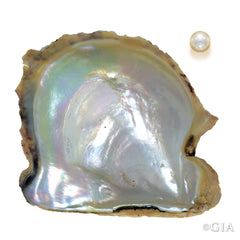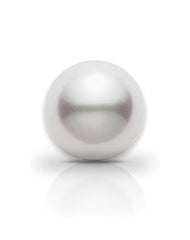June 13, 2019

The credit for being the first to achieve pearl culturing commercially goes to Kokichi Mikimoto. He began his efforts around 1893 by nucleating Akoya mollusks. His repeatable technique achieved a product that was high in quality. Some were of especially excellent quality, standing above most other cultured pearls. Soon after his success, other Japanese companies began pearl culturing by using these mollusks and helped improve culturing techniques.
Pearl culturing is the process where a nucleus (shell bead) or nuclei are inserted into a mollusk, which is an invertebrate animal with a soft, unsegmented body enclosed by a calcareous shell of one or more pieces. The mollusk will then coat the nucleus with nacre, and this will help create a larger pearl in a smaller fraction of the usual time.
 Akoya Mollusk – Photo from GIA
Akoya Mollusk – Photo from GIA
Akoya pearls are also known as saltwater pearls and are mostly found in the waters around Japan. They are from the mollusk variety called "Pinctada Fucata". These mollusks live in cooler water compared to other types of mollusks. Due to the cooler temperature of the water, these mollusks make very lustrous pearls because the nacre has smaller and finer grained crystals than their warm water cousins. Very fine Akoya pearls can have truly excellent luster that is almost metallic in appearance. Other types of pearls, such as South Sea pearls, don’t reach the same luster level due to the temperature of the water they come from. Warmer water pearls have a “softer” appearing luster.
 Akoya Cultured Pearl – Photo from K. Mikimoto & Co. Ltd
Akoya Cultured Pearl – Photo from K. Mikimoto & Co. LtdAugust 29, 2019
May 30, 2019